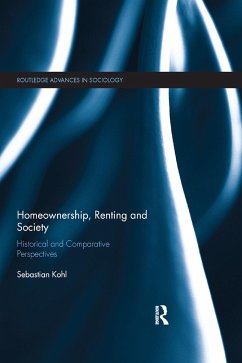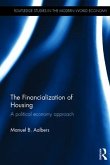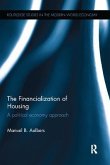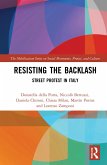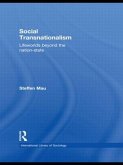On the eve of the financial crisis, the USA was inhabited by almost 70 percent homeowning households, in comparison to about 45 percent in Germany. Homeownership, Renting and Society presents new evidence showing that this homeownership gap already existed between American and German cities around 1900. Existing explanations based on culture, government housing policy or typical socio-economic factors have difficulties in accounting for these long-term cross-country differences.
Using historical case studies on Germany and the USA, the book identifies three institutional domains on the supply-side of the housing market - urban land, housing finance and construction - that set countries on different housing trajectories and subsequently established differences that were hard to reverse in later periods. Further chapters generalize the argument across other OECD (Organisation for Economic Co-operation and Development) countries and extend the explanation to coverhistorical differences in homeownership ideology and horizontal property institutions. This enlightening volume also puts forward path-dependence theories in housing studies, connects housing with vast urban-history and political-economy literature and offers comprehensive insights about the case of a tenant's country which contradicts the tendency towards universal homeownership.
Providing an all-new historic-institutionalist explanation of the German-American homeownership gap, this title will be of interest to postgraduate students and scholars interested in fields including: Housing Studies, Sociology, Urban History, Political Economy, Social Policy and Geography. It may also be of interest to those working in housing field organizations and ministries.
Using historical case studies on Germany and the USA, the book identifies three institutional domains on the supply-side of the housing market - urban land, housing finance and construction - that set countries on different housing trajectories and subsequently established differences that were hard to reverse in later periods. Further chapters generalize the argument across other OECD (Organisation for Economic Co-operation and Development) countries and extend the explanation to coverhistorical differences in homeownership ideology and horizontal property institutions. This enlightening volume also puts forward path-dependence theories in housing studies, connects housing with vast urban-history and political-economy literature and offers comprehensive insights about the case of a tenant's country which contradicts the tendency towards universal homeownership.
Providing an all-new historic-institutionalist explanation of the German-American homeownership gap, this title will be of interest to postgraduate students and scholars interested in fields including: Housing Studies, Sociology, Urban History, Political Economy, Social Policy and Geography. It may also be of interest to those working in housing field organizations and ministries.
It is well known that the US has a much higher homeownership rate than Germany. Cultural, land scarcity and welfare state explanations have been mobilized to explain the difference. Sebastian Kohl rejects such explanations and comes up with three explanations rooted in nineteenth century developments: differences in municipal governance over land use, mortgage lending institutions and the organization of residential construction.
Manuel B. Aalbers, associate professor of Geography at KU Leuven, Belgium
Manuel B. Aalbers, associate professor of Geography at KU Leuven, Belgium

